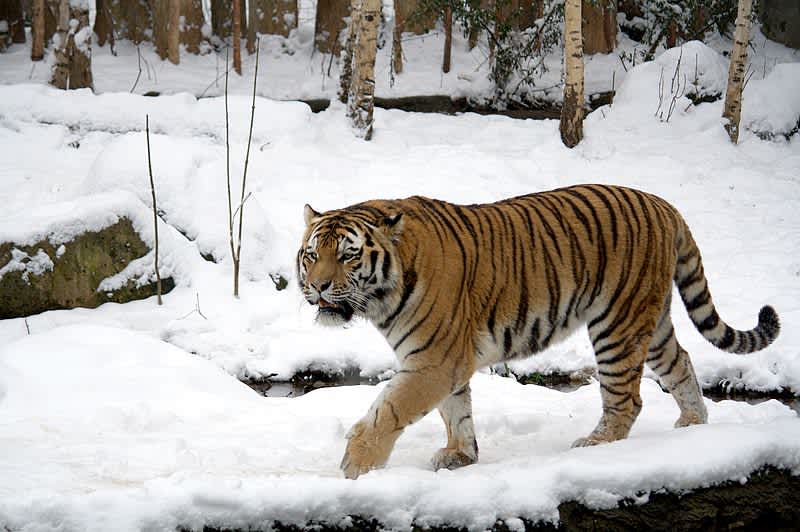Tiger Study Proves Big Cats Evolved to Kill
OutdoorHub Reporters 09.19.13

A recent gene-mapping study on a Siberian tiger helped shed some light on the development of all big cats. Lions, leopards, mountain lions and tigers are all among the top predators of their native ranges, but what exactly do they share in common? According to a new report in Nature Communications, there is only a 4.4 percent difference in DNA between the tiger and the domestic cat. This means that a striped predator stalking prey through the jungles of Bangladesh shares 95.6 percent of its genetic makeup with the same short-hair tabby sitting on your couch.
“Genetically all the cats are very close, so we need close genetic mapping to find the small differences that make them distinct,” genome expert Jong Bhak told National Geographic.
By comparing gene samples from the Siberian tiger—the largest tiger subspecies—and those from a snow leopard and lion, scientists are beginning to piece together how these large cats developed. All big cats are hypercarnivores, or animals whose diets consist of more than 70 percent meat. Hypercarnivores are not necessarily apex predators, but creatures like the tiger or lion would certainly qualify. Big cats achieved this dominant status by what researchers say are a set of 1,376 genes devoted to the production of muscles for hunting, and a gullet designed to break down protein efficiently. Because cats focused almost exclusively on developing their predatory traits, they can be considered specialists.
“I take this to indicate that [big cats] have evolved to fill a very particular carnivorous niche in the environment that is predicated on the advantages in hunting these genes provide,” said Bhak.
Bhak was one of the co-authors of the study published in Nature Communications. They found that even among cats, Tigers are especially enriched in olfactory receptor activity, possibly heightening the cat’s sense of smell. Other big cats have also adapted to their environments to become more lethal hunters, such as lions hunting in groups on the plains of Africa, or snow leopards developing their characteristic coat.
“All the cats are unparalleled hunters, and here we are seeing some of the genetic reasons,” Bhak said.
The scientists hope that by better understanding large cats, conservation efforts can be tailor-made to preserve them. The tiger is not only the largest cat species, it is also often the face of conservation world-wide.

